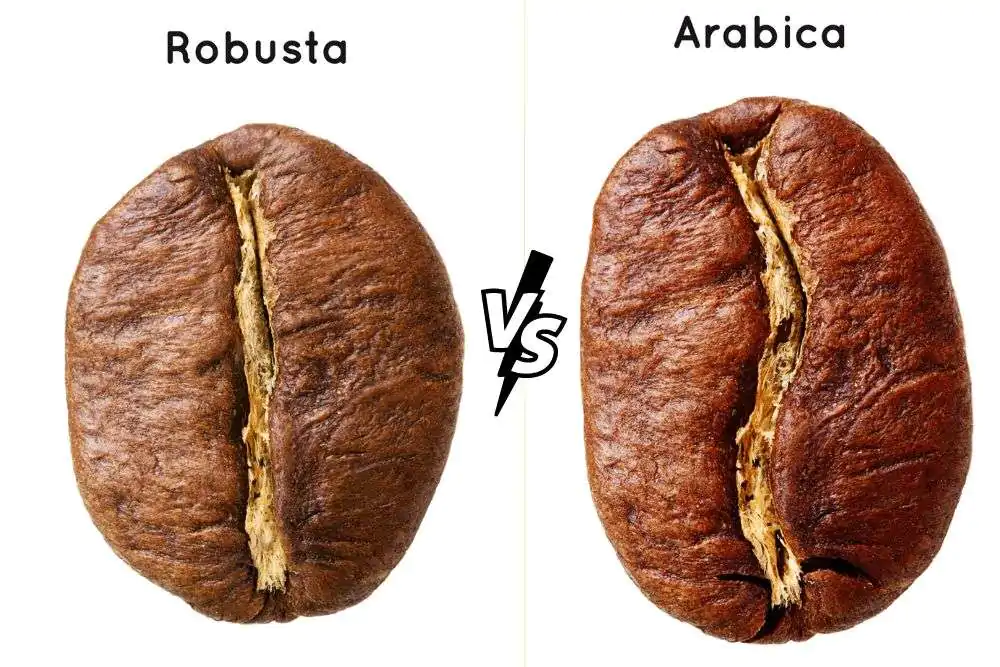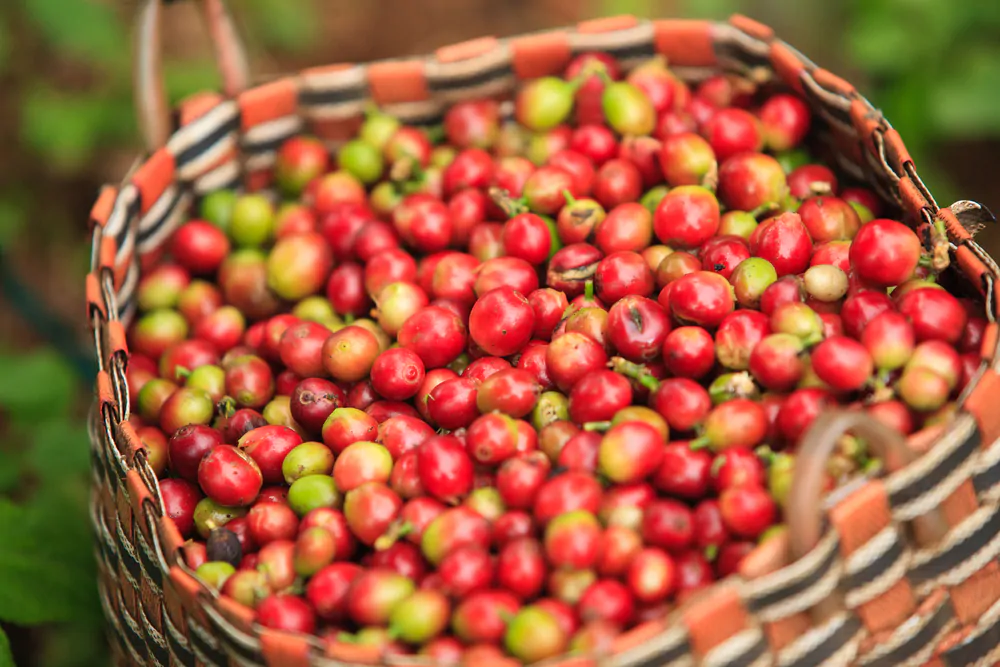Want to know the difference between Robusta vs. Arabica coffee? Check out this article to learn more about these popular brews.

People have been growing coffee plants to harvest and roast their beans since 850 AD. Historians aren’t sure what kind of coffee plant was used in the first caffeinated brews, but we know that we have since discovered over 100 different species of coffee plants thousands of years later. That’s a lot of varieties to choose from for your morning cup!
Today, we will look at the two most commonly available varieties of coffee ‒ Arabica and Robusta. Though they both make for a delicious cup of coffee, they are very different in taste and caffeine content, where they can be grown, and cost.
Robusta Vs. Arabica Coffee: Key Differences

Arabica Coffee At A Glance
Most Arabica coffee trees are grown in Africa, Latin America, Indonesia, and Brazil. The beans harvested from these trees have a mild, smooth flavor with notes of sweetness. Arabica coffee trees require very specific conditions to grow well and quickly become diseased, making the cost of Arabica coffee higher than other varieties.
Check out our explainer on Maxwell House coffee made from arabica coffee.
Robusta Coffee At A Glance
Robusta coffee trees are primarily grown in sub-Saharan regions of Africa and parts of Asia, including India, Indonesia, and Vietnam. Robusta coffee beans tend to be bitter and acrid and with a taste that can be similar to burnt rubber. However, robusta beans are far cheaper than Arabica to cultivate, thanks to the plant’s heartiness and resistance to disease and parasites.
A More In-Depth Look At Robusta Vs. Arabica Coffee
Aside from their geographical locations, there are a wealth of differences between these two bean types.

A Closer Look At Arabica Coffee
Arabica coffee is a descendant of the original coffee trees first grown in Ethiopia and makes up approximately 60% of the coffee globally. To grow properly, it requires mild temperatures between 59 and 75 degrees, moderate rain, and elevations between 2,000 and 6,000 feet above sea level. These growing conditions mean that it can be a costly plant to cultivate.
Arabica is considered to be the premier coffee variety and is priced accordingly. In addition, many premium specialty coffee brands proudly market themselves as using “100% Arabica” blends in their brews.
That said, there are lower-quality Arabica blends on the market. In general, Arabica coffee has about half the caffeine content of Robusta coffee at nearly two times the price ‒ something to consider if you are looking for the best pick-me-up for your buck.
A Closer Look At Robusta Coffee
Robusta coffee has grown in popularity in recent years and now accounts for a little more than 40% of all coffee harvested worldwide. It is widely considered to be of lower quality than Arabica. It is commonly used for instant coffee and has historically been associated with gas station or diner coffee.
Despite this negative connotation, it continues to expand its presence on the market due to its low cost and robust nature, that makes it easy to grow in many geographic regions. It grows well in warmer climates and lower altitudes than Arabica beans. As demand grows, coffee producers are currently working on higher quality Robusta blends by applying some practices for Arabica coffee blends.
Arabica-Robusta Coffee Blends
Perhaps the best of both worlds can be found in Arabica-Robusta blends. In these blends, the Arabica beans contribute a smooth, appetizing flavor and the Robusta beans enhance intensity, crema, and caffeine content. These blends are commonly used when making espresso.

